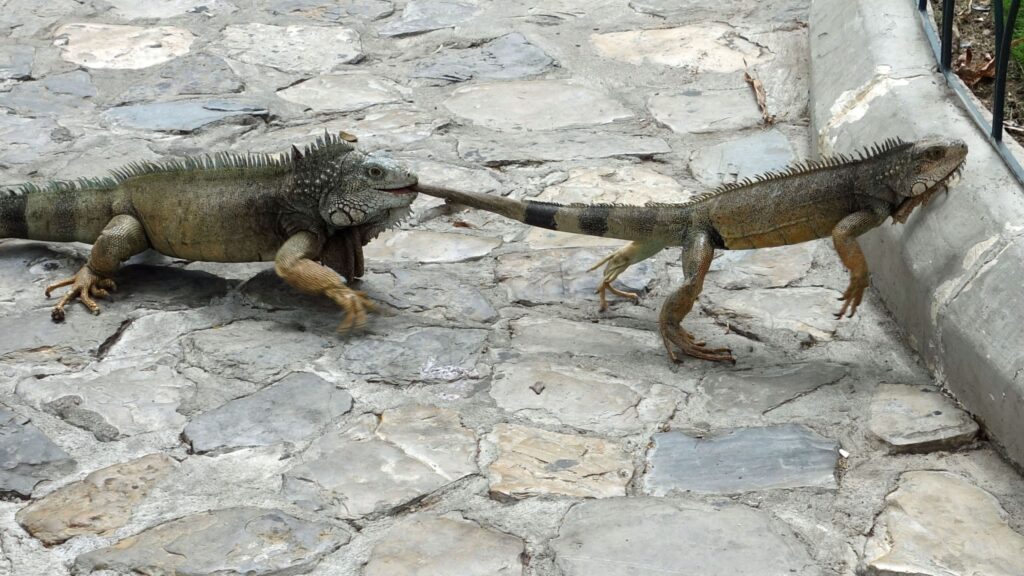10+ Iguana Bite Prevention Tips

As fascinating and popular pets as they are, iguanas can pose a significant risk to their owners and handlers due to their powerful bites. Iguana bites can be painful and potentially serious, leading to injuries that may require medical attention. Understanding the behavior and body language of iguanas is crucial in preventing bites. Here, we will delve into the world of iguana behavior, explore the reasons behind their bites, and most importantly, provide actionable tips on how to prevent iguana bites.
Understanding Iguana Behavior and Body Language

Before we dive into the tips for preventing iguana bites, it’s essential to understand why iguanas might bite in the first place. Iguanas are wild animals that have complex social and spatial needs. In their natural habitat, they are solitary creatures and have a strict hierarchy. When kept as pets, it’s crucial to mimic their natural environment as closely as possible to reduce stress and aggression. Iguanas communicate primarily through body language. A threatened or stressed iguana may display specific behaviors such as puffing out their throat skin, lowering their body, or whipping their tail. Recognizing these signs early can help prevent a bite.
Recognizing the Signs of Stress and Aggression
Learning to recognize the signs of stress and aggression in iguanas is key to preventing bites. An iguana that feels threatened, scared, or is in pain may bite. Signs to look out for include hissing, tail whipping, head bobbing, and color changes. If an iguana is darkening in color, it could be a sign of stress or aggression. Understanding and respecting these signals can help in preventing confrontations that might lead to bites.
| Behavior | Interpretation |
|---|---|
| Hissing | Warning sign of fear or aggression |
| Tail Whipping | Sign of irritation or frustration |
| Head Bobbing | Could indicate courtship, but also aggression in males |
| Color Change | Darkening could indicate stress or aggression |

Iguana Bite Prevention Tips

Preventing iguana bites involves a combination of understanding iguana behavior, providing a suitable environment, and handling them correctly. Here are some tips to help minimize the risk of being bitten by an iguana:
- Provide a Suitable Environment: Ensure the enclosure is large enough and well-ventilated. A happy and healthy iguana is less likely to be aggressive.
- Handle Them Correctly: Support the iguana's body and tail when handling. Avoid picking them up by the tail, as this can cause pain and lead to biting.
- Watch for Body Language: Always observe the iguana's body language. If they appear stressed or aggressive, it's best to leave them alone.
- Avoid Sudden Movements: Sudden movements can startle an iguana, leading to a bite. Move slowly and calmly around them.
- Keep Your Hands Away from Their Mouth: Iguanas have a powerful bite. Keeping your hands away from their mouth can prevent accidental bites.
- Wear Protective Clothing: When handling iguanas, especially larger ones, wear long sleeves and gloves to protect your skin from scratches and bites.
- Provide a Balanced Diet: A well-fed iguana is less likely to be aggressive due to hunger or nutritional deficiencies.
- Ensure Proper Hydration: Dehydration can lead to irritability in iguanas. Ensure they always have access to fresh, clean water.
- Limit Handling: Iguanas are not as affectionate as dogs or cats and may not enjoy being handled excessively. Limit handling to necessary interactions.
- Be Aware of Breeding Season: During the breeding season, male iguanas can become more aggressive. Be cautious and limit interactions during this time.
First Aid for Iguana Bites
In the unfortunate event of an iguana bite, it’s essential to know how to provide first aid. Iguana bites can potentially become infected, so cleaning the wound immediately with soap and water is crucial. Applying an antibiotic ointment and covering the wound can help prevent infection. If the bite is deep or if you notice signs of infection, such as redness, swelling, or increased pain, seek medical attention.
How often should I handle my iguana to prevent it from becoming aggressive?
+Iguanas do not require frequent handling to stay tame. In fact, limiting handling can help reduce stress and aggression. Handle your iguana gently and briefly, focusing on building trust rather than forcing interaction.
What are the signs that my iguana is stressed or about to bite?
+Signs of stress or aggression in iguanas include hissing, tail whipping, head bobbing, and darkening of color. If you notice any of these behaviors, it’s best to give your iguana space and avoid handling it until it appears calm.
How can I ensure my iguana’s environment is suitable to reduce aggression?
+Provide a large, well-ventilated enclosure that mimics the iguana’s natural habitat. Ensure there are places for your iguana to climb, bask, and hide. Maintain a proper temperature gradient and humidity level, and provide a balanced and nutritious diet.



